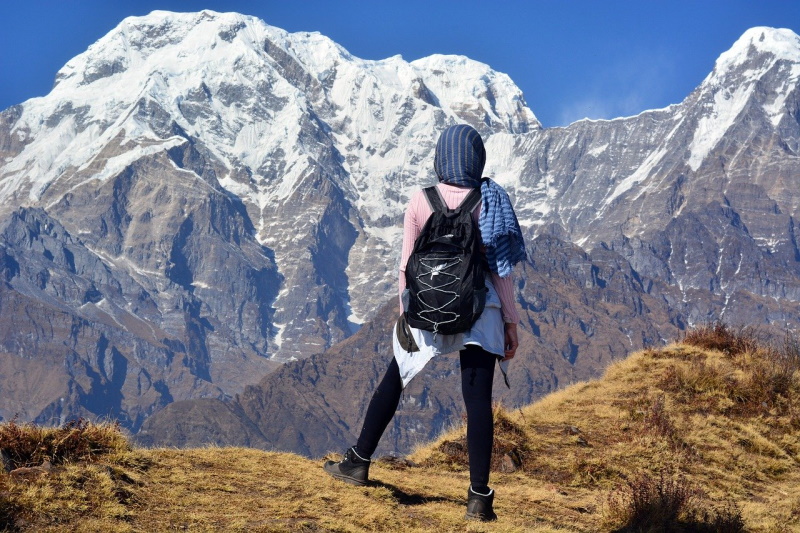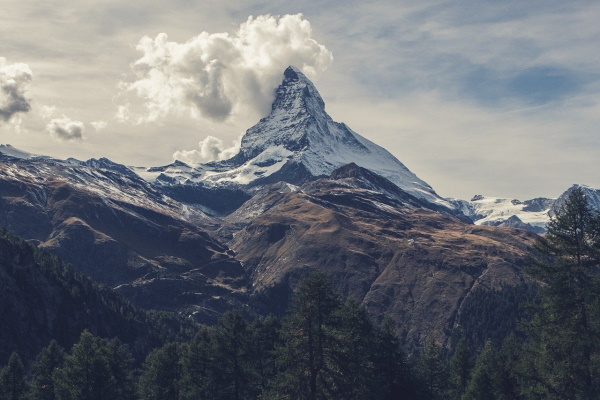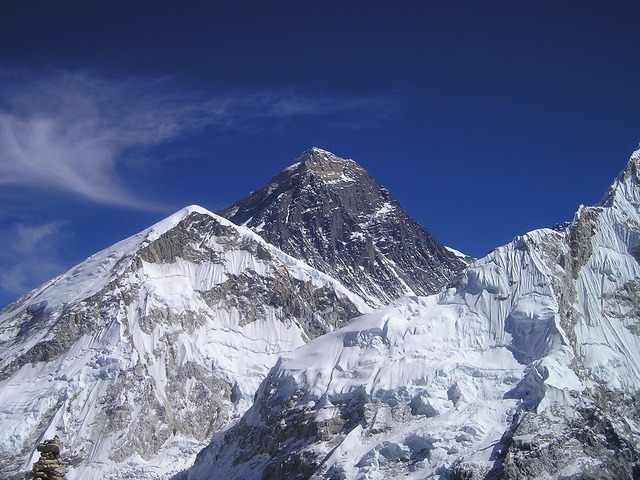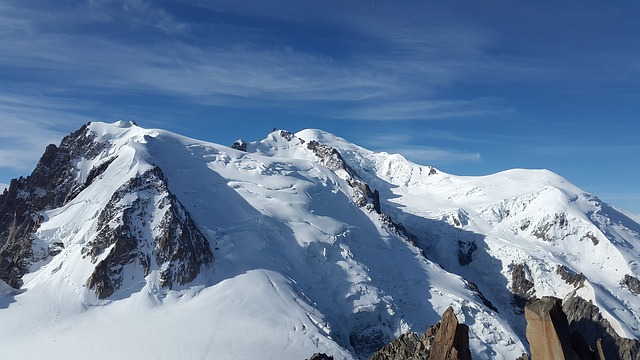As much as tackling high mountain peaks is a monumental accomplishment for most outdoor enthusiasts, mountain climbing is not as fascinating as it appears on TV or magazines. Mountain climbing also carries various risks and dangers. Over the years, hundreds of people have lost their lives trying to tackle different mountains across the globe, due to falls, exposure to extreme conditions, avalanches, violent storms, and altitude sickness, among other causes. Here is a list of the ten hardest mountains to climb.
Annapurna
While Annapurna is the tenth highest peak in the world, mountaineers have ranked it as the hardest mountain to climb. Exciting but highly dangerous, this peak that is located in the Himalayas, rises approximately 8090 meters. Unlike other popular mountains like Everest, Annapurna only attracts the best mountaineers in the globe. And unfortunately, a significant number of those who have attempted to tackle this mountain never managed to return. Only 190 mountaineers have managed to tackle Annapurna I – the main peak on this mountain. So far, 72 mountain climbers have lost their lives on this mountain, which means that it has a death rate of approximately 38%. In fact, it’s the only mountain in the world with such a high death rate.
From base camp to the peak, the entire route is extremely difficult, with plenty of highly dangerous sections. Climbers have to trek under seracs, unbalanced ice walls as well as other dangerous formations, which may come down any time. Also, it’s important to note that this mountain has plenty of avalanche-prone sections, which explains its high fatality rate. Apart from the avalanches, it also features several tough sections, which have contributed to some of the deaths. Furthermore, the fluctuating climatic conditions on this mountain also contribute to the challenge. For instance, snowstorms can appear at any time, making it hard to see anything ahead or behind you. And at such high altitudes, climbers are also prone to various health complications like pulmonary edema and mountain sickness, among others. Lack of adequate local support, inaccessibility as well as the technicality of the various sections make it the hardest mountain to climb. With such a high fatality rate, any attempt to climb this mountain should be a well thought out decision that will require careful planning.
K2
Located on the China – Pakistan border, K2 is another challenging mountain to tackle. Also called Mt. Chhogori, this second highest mountain in the world also has a high fatality rate as far as mountain climbing is concerned. It has a death ratio of approximately 25%, which is to show that one in every four people that attempts to tackle this mountain never comes back. While mountains such as the Everest record 500 successful climbs every year, K2 can go for an entire year unclimbed, due to its extreme technicality.
Only veteran mountain climbers have attempted to tackle this mountain, and it’s easy to see why. It’s steep slopes, combined with frequent avalanches make the K2 an extremely dangerous mountain to climb. Furthermore, some sections of rocks on this mountain can collapse any time, killing and burying any climber underneath. The Bottleneck section is the most dangerous route on this mountain. Most of the fatalities on this mountain have occurred on this section, with the most recent one in 2008 when 11 mountain climbers from different countries lost their lives while 3 others suffered serious injuries.
Nanga Parbat
Nanga Parbat is an extremely dangerous mountain, thus the name Killer Mountain. Others call it the “Man Eater,” due to the high number of deaths that have occurred on this mountain. The first successful ascent was done in 1953 by Austrian mountaineer Herman Buhl. Before then, 31 people had died trying to summit this mountain. And by 2012, only 335 people had managed to summit the Nanga Parbat successfully. Avalanches are the leading causes of fatalities on this mountain. Exposure to extreme weather conditions has also contributed to a significant number of fatalities. The death rate on this mountain currently stands at 22%.
Kanchenjunga
Ranked as the third tallest mountain peak in the world, Kanchenjunga is such a remarkable sight. However, it’s equally a hard mountain to climb, and only a few climbers who have attempted to tackle this mountain have returned to tell the story. With a death rate of 20%, Kanchenjunga is not for amateurs. It’s called the “Man Eater” for a reason. Falls are the major causes of fatalities on this mountain, mainly due to difficult terrain. Apart from that, the area is extremely remote. It will take you approximately two weeks of trekking before you can reach the base camp, meaning you will be tired already before you can start your summiting journey. Also, you will have to tackle lots of short technical climbs on the way, before you can hit the summit. Most of these climbs fall right under seracs and overhanging glaciers, which can tumble at any time. Some sections are also quite steep. For instance, a steep section just above Camp 4 has led to the deaths of several climbers as they were descending from the summit. In short, steep climbing slopes, avalanches and bad weather all make the Kanchenjunga one of the hardest mountains to climb in the world.
Matterhorn
At 4500 meters, some people might assume that the Matterhorn is an easy mountain to summit, compared to those that are over 6,000 meters. However, there is a reason why the Matterhorn is ranked among the most difficult mountains to summit. To date, this mountain has taken the lives of over 500 climbers. Every year, the Matterhorn, which is located in the Alps, attracts more than 3,000 climbers every year. And this overcrowding has contributed to some of the deaths. Just like other challenging mountains, the Matterhorn is prone to rockfalls and avalanches, as well as bad weather and storms. Every year, at least 12 deaths are recorded on the Matterhorn, thus putting it in the company of other risky mountains like the Annapurna and Nanga Parbat. Heavy storms usually occur in the afternoon. If you are new to mountain climbing and you would like to attempt this mountain, it’s highly advisable to do it during the off-peak season.
The Eiger
With a height of only 13,000 feet, you might be tempted to assume that the Eiger is an easy mountain to tackle. However, such an assumption couldn’t be further from the truth. The Eiger is ranked as one of the toughest mountains to climb in the world. It has one of the largest north face in the entire Alps. Its north face features shattered limestone and ice. Most people in the mountaineering community call its north face the “Murderous Wall,” since it has claimed the lives of several climbers. In fact, the north face is so dangerous that some climbers have been forced to abandon their climbs when they are just a few hundred meters from the summit, as a result of falling ice and rocks. Since it was first summited in 1858, only 700 climbers have successfully managed to tackle it. And during that period, it has claimed the lives of 64 climbers, some of them who were elite mountaineers.
Everest
At approximately 8,500 meters or 29,000 feet, if you prefer, Everest is the highest mountain in the world. And a list of the hardest mountains to climb cannot be complete without mentioning the majestic Everest. Located on the China – Nepal border, this mountain attracts thousands of mountain climbers every year. So far, 7,500 people have successfully summited it, making it one of the most popular mountains in the world among mountain climbers. The total number of deaths that have occurred on this mountain is approximately 300. Apart from overcrowding, the mountain’s brutal climate and extremely cold conditions, combined with frequent avalanches, have contributed to the majority of the fatalities.
Above 8,000 meters, most climbers experience serious medical problems like heart attacks, altitude sickness, pulmonary edema, and cerebral thrombosis, just to name a few. And once a climber experiences such serious medical complications at such altitudes, it’s almost impossible or extremely difficult for them to get medical attention. Furthermore, bringing them down safely is not easy, and this explains why most climbers die there, with no one to bring their remains down. While the Everest might be a bit easier to climb than other mountains in the Alps, avalanche crevasses, fluctuating weather, falls, extremely cold temperature and altitude sickness, you cannot afford to underestimate this mountain.
Baintha Brakk
Located in Pakistan and known as the “Ogre” by the locals, the Baintha Brakk is a rocky, craggy and steep mountain that is not only hard to climb but extremely dangerous. Climbers have to traverse through ice slopes, rocks and unstable ice walls, which can collapse any time. Besides the technical difficulties that it presents, its weather is highly unpredictable. While it continues to attract hundreds of climbers every year, only 3 successful summits have been made so far. One of the climbers who made it to the peak had to endure broken legs and ribs while the other one suffered serious pneumonia during the ascent.
Mont Blanc
As the highest mountain peak in Europe, Mont Blanc continues to attract thousands of mountain climbers every year. Statistics show that more than 30,000 people attempt to tackle Mont Blanc every year, with at least 200 per day. However, it also has the highest fatality rates in Europe, compared to other mountains in the region. At least 100 people die on this mountain every year. So far, approximately 6,000 to 8,000 climbers have lost their lives attempting to tackle the Mont Blanc. As much as this mountain is not that difficult to climb, the high number of amateur climbers has contributed to its high fatality rate. Due to their inexperience, they end up using wrong climbing strategies or exposing themselves to various risks.
Some inexperienced climbers, who have never tackled a similar challenge before, rely too much on the skill and expertise of their guides. It’s also important to note that some sections of this mountain have falling rockfalls, such as the Le Gouter route pass. On the other hand, climbers have to trek through deep cracks and dangerous crevasses when using the Grand Mulet route. And during the warm seasons, the rising temperatures soften the snowpacks, which eventually become avalanches. Also, the weather, especially in the higher altitudes, keeps changing.
Dhaulagiri
With an elevation of 26,794 feet, Mt. Dhaulagiri is the seventh highest mountain in the world. Until date, only 480 people have managed to reach the top of this mountain. And during the same period, it has taken the lives of at least 73 climbers. Some during ascent while others during descent. Just like other tall mountains, avalanches are the leading cause of death for climbers on this mountain. Apart from deadly avalanches, high altitude and bad weather have also contributed to some of the deaths.
Closing Remarks
Whether you are going on your first mountain climbing expedition or you have been summiting for many years, every mountain presents a different challenge. Therefore, before you attempt to climb any mountain, make sure you are adequately prepared, and you have the proper gear. And always remember that mountain climbing doesn’t have to be a do or die situation. If you feel that your body is not up to the task or the weather conditions are unbearable, you can always turn back and attempt to climb another day.






0 comments